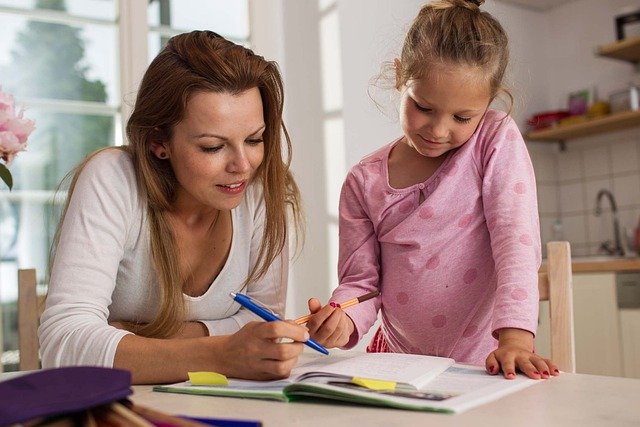Some parents have discovered the joy of home education as a result of the Covid-19 lockdown, but others found lockdown schooling-at-home extremely challenging. Let’s look at why.
What’s the difference between school-at-home vs eclectic homeschooling in South Africa?

Lockdown schooling or remote learning is not the same as home education by choice. When families are forced into this unexpectedly, it can be a stressful burden placed on unprepared parents by the school system. Online schooling also differs from parent-led home education as a family is forced to meet the demands of the school service provider.
When you choose home education, if you are well-informed, you can use a much more flexible and enjoyable way to learn together as a family.
The trouble is, that many new homeschooling families make the mistake of replicating the school system at home, and generally, they find the experience less than satisfying.
What’s the secret to happy homeschooling in South Africa?
If home education is not a joyful experience, all that is needed is a shift in the way you approach learning and a change in the type of curriculum resources that you choose. You can shift any time of year – no need to suffer another day longer!
We recommend an ECLECTIC homeschooling model, where parents and children together decide what they will learn and what resources they will use to achieve THEIR goals, rather than being a slave to outside dictators.
Eclectic refers to using resources from a variety of systems, styles or approaches to home education. It’s a pick-and-mix approach where you select what suits your family and even each child’s needs and goals best. You progress through the learning material at your family’s own pace.
Eclectic home education is perfectly legal, allows for world-class education standards and it is still possible to end the high school homeschool years with a (globally) recognised school-leaving certificate if you follow this style of home education.
Consider the freedom, flexibility and fun that this form of home education offers:
The Differences between School at Home (Distance Learning) and Eclectic Homeschooling
| SCHOOL AT HOME/DISTANCE LEARNING | ECLECTIC HOME EDUCATION | |
| Parental choice | The curriculum provider dictates the content of the lessons which are compulsory. | The parent and/or child chooses a variety of curriculum products or other resources and has freedom of choice. Lessons are not compulsory. You learn what you want to learn about. |
| Children’s choice | Children have no choice and very little autonomy. They are learning under compulsion. | Parents can empower children and give them a say in their education. They can choose what they wish to study and develop self-motivation and autonomy. Learning is a parent-child collaboration. |
| Curriculum content | Most commonly based on CAPS the same as the national curriculum used in SA schools or the national curriculum from other countries, eg. UK (CAPS = Curriculum Assessment Policy Statement which governs what is taught and tested in South Africa schools.) | Endless choice of learning materials and experiences with opportunity for creativity and flexibility. |
| Materials | Text books, workbooks or the online equivalent are the main medium. These are usually written or created by a panel of teachers and are rather formal. | Families can select a variety of resources such as ‘living books‘ which may include stories and reference books by authors who are passionate about sharing their expertise and creating a learning experience. They can also use the internet, videos, games and practical experiences freely. |
| Structure | The curriculum is highly structured for control and conformity, and graded by age, just like the school system. It may include a calendar, time-tables, dates and deadlines. | Learning can be self-paced using multi-level learning resources so that multi-age families can learn together. Since there are no time constraints you can spend as much or as little time on any given topic to satisfy the children’s interest levels. |
| Costs | Enrolment fees are set by the curriculum provider and paid annually per child. The overhead costs of the services offered for monitoring, assessment and testing are included. | Parents can spend as little or as much money as they choose, throughout the year. Non-consumable products can be shared or re-used with younger children, making any investment very cost-effective. |
| Pace | Instruction is aimed at the average learner in an age-segregated grade for the duration of a school calendar year. The huge variety of abilities of children is not well-accommodated. | Instruction and progess is self-paced and can be customised to suit each individual child. |
| Special education needs | Children with learning challenges often struggle to keep up and become disillusioned if they don’t score well or ‘measure up’. The focus is on the curriculum and remediating weaknesses in order to pass tests. | Children with learning challenges can work at their own pace without their progress constantly being measured. They can enjoy a customised education where they are able to discover what they are good at too and focus on areas of strength that will help them to succeed in life. |
| Effect on family relationships | The parent feels under pressure to ensure that the children keep up with the programme and the dates, deadlines and demands of the curriculum supplier. The parent often feels insecure as she views the curriculum suppliers as the ‘experts’ on particular subjects. | Parents and children are free to enjoy learning at their own pace. There is no outside pressure, no stress, no nagging kids to keep up. You are never ‘behind’. The parent is a co-learner and learns to trust herself as the expert on her own children. |
| Learning goals | The curriculum supplier’s focus is on delivering curriculum content and teaching subjects en masse. Everybody learns the same content. The goal is to pass tests and exams. | The parent’s focus is on teaching a child how to learn and sparking a life-long love of learning. The goal is to help each child discover their particular interests, unique strengths and develop their full potential. |
| Assessment | Regular assignments, testing and exams are required for the curriculum provider to measure and assess learning. Parents are not trusted. | Parents assess children’s progress on a daily basis using a multitude of methods. Testing is possible but not required. Parents learn to trust themselves and their children. |
| Values | The state’s values and ideology may be reflected in the curriculum and this may conflict with your family values. | Parents can choose materials that don’t clash but even support their values and beliefs. |
| Personal interests | Subjects offered are limited to subjects offered in school, or even fewer options, in most cases. Personal interests may not be well-accommodated in a one-size-fits-all offering. | Limitless choice of subjects, topics or skills. Traditional school subjects are not the only options. |
| Schooling/education | Uniformity and standardisation of learning | Customised learning to suit each unique individual |
| Most common matric options | National Senior Certificate or Cambridge AS | National Senior Certificate, Cambridge AS, GED, American High School Diploma or vocational training and other alternatives. High school options |
Keep Learning about Homeschooling in South Africa…
Read more about Unlocked Learning at Home and how and why you should make the switch to Eclectic Homeschooling.
Your Learning Pathway with Footprints
Use this handy table to determine at which level you should begin with one of our beautiful Footprints programmes. From preschool level to high school, Footprints gives you the tools you need to prepare your children academically for excellence when they reach matric level and beyond.
Worried about government requirements? Read about Footprints and CAPS – Astonishing Alignment
Footprints Guidelines for Registration with the DBE
Get help writing your letter of motivation and description of your Footprints eclectic home education plus informal learning.
Tired of feeling stressed? Relaxed Homeschooling
Homeschooling in Hard Times
Prefer video clips? We have a range of video clips on all these topics and many more on our Footprints YouTube channel. Subscribe for regular updates.
